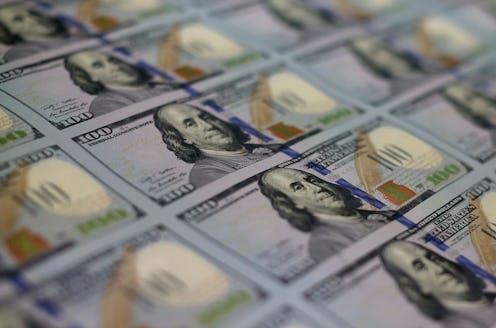News
"Dark Money" Flooded The Midterms
Termed the “dark money elections,” this year’s midterms saw an obscene amount of "dark money"— outside money flooding in from undisclosed sources to advocate for or against candidates. The Center for Responsive Politics estimates that more than $3.67 billion was spent on the House and Senate races alone, making the 2014 contests the most expensive midterm election in U.S. history. And that figure doesn’t even include the flood of over $100 million in so-called “dark money” — meaning, contributions funneled through nonprofit organizations and business groups that do not have to disclose their dollars.
Since 2010’s Citizens United and other court decisions loosened campaign finance restrictions, political campaigning has shifted tremendously as candidates and special interest groups alike attempt to remake the political landscape in their favor. 2012 was the election of the super PAC as candidates and interest groups used the political committees to bypass restrictions on direct campaign contributions. But 2014 has seen the development of a new beast — the last-minute establishment of shadow organizations that pour millions into closely contested races in the final days before the election.
The New York Times’ Nicholas Confessore and Derek Willis lay out how these shadow groups have been operating this year: nonprofit organizations either pop up after the Federal Election C’s last disclosure deadline in mid-October or they remain mostly dormant until after the deadline. Then they raise millions of dollars from undisclosed sources and spend it on TV ads and other advocacy items. This way, these organizations do not have to revel anything about their finances until after the election has already taken place.
"It’s yet another way to hide money from the public," Kathy Kiely, managing editor for the Sunlight Foundation, told The Times. "What’s particularly insidious is that these are the late contributions that can sometimes tip the balance in a close race. And because of the timing, it looks like people are deliberately trying to mask the source of the money until after Election Day."
Owing in large part to dark money, the North Carolina Senate race between Thom Tillis (R) and incumbent Kay Hagan (D) became the most expensive Senate contest ever with more than $113 million spent by Nov. 1. The Senate campaigns in Colorado, Iowa and Kentucky followed in a similar vein as North Carolina with $96 million, $85 million and $78 million, respectively, spent between the candidates and outside groups.
As The New York Times noted, the Senate race in Kansas didn’t even become competitive until the Democratic candidate Chad Taylor dropped out in September and effectively gave his share of the electorate to the independent candidate, Greg Orman. That didn’t stop a proliferation of dark money groups from sprouting up in September and through October to throw cash into the Kansas race. Since then, the Times reports that shadow groups had spent upwards of $14 million, setting the contest on track to become the most expensive in state history.
This campaign-spending free-for-all is only made worse by the general reluctance of the FEC and the IRS to regulate these nonprofit organizations that are funneling millions of dollars into unaccountable political advocacy. Lee Fang, a reporting fellow with The Nation Institute's Investigative Fund, explains:
We’re seeing very little enforcement from the Federal Election Commission. That agency, which is charged with enforcing election law, is deadlocked, three to three, with the three Republican commissioners voting basically in lockstep since 2010 to block any investigation of potential wrongdoing. So we’re seeing this election is turning out to be kind of the Wild West. Not only are campaign entities raising and spending unlimited amounts, much of it in secret, but we have no cop on the beat, we have no enforcement of election law.
The question remains — what is all this dark money buying? Largely, attack ads. (Why are we not surprised?)
Many of the most heated Senate races this cycle saw the greatest percentage of attack ads, almost half of which were bought with dark money. In North Carolina, a whopping 67 percent of the Senate campaign ads were negative; as of Oct. 29, $36 million of outside spending in the race came from organizations that did not disclose their donors. Kansas’ Senate race came in second at 58 percent negative ads; the close races in Iowa, Colorado and Michigan all tied for third with 57 percent of TV advertising being attack ads.
So many aggressive and insidious campaign ads, so little transparency.
Lawrence Norden and Wendy R. Weiser at the Brennan Center sum up the dark money midterms well:
Outside campaign spending has shattered previous records, with new groups like super PACs and "dark money" groups that do not disclose their donors dwarfing the spending of ordinary citizens and sometimes even candidates themselves. In many key races it is impossible for us to know who is buying our elections.
In Citizens United, the Supreme Court ruled that money was speech in political contests. But as this midterm election makes clear, dark money isn’t fostering productive public debates about what direction Americans want to take their democracy. Instead, it’s stifling those very conversations by turning political campaigns into shouting matches between those who can afford to buy their own soapboxes.
Images: Getty Images (3)
